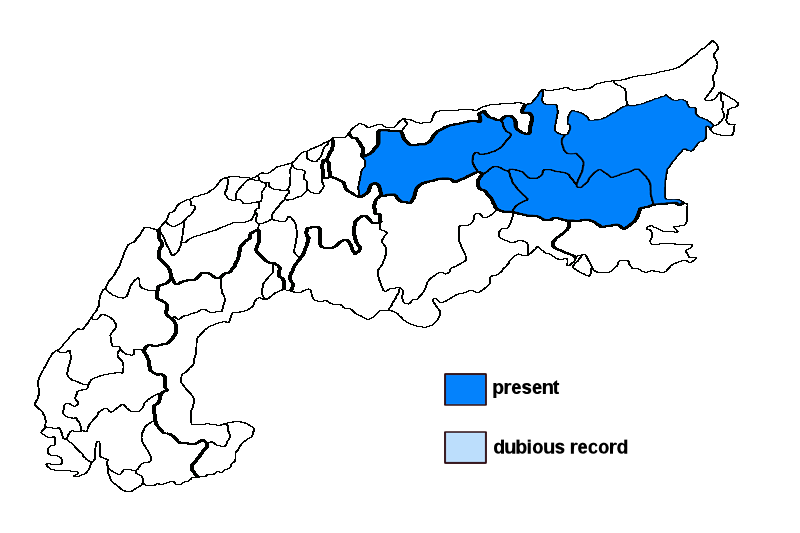Melanohalea septentrionalis (Lynge) O. Blanco, A. Crespo, Divakar, Essl., D. Hawksw. & Lumbsch
Syn.: Melanelia septentrionalis (Lynge) Essl., Parmelia olivacea (L.) Ach. var. septentrionalis Lynge, Parmelia septentrionalis (Lynge) Ahti
Lichenised.
Substrate: bark
Altitudinal range: from the montane belt (potential vegetation: deciduous forests dominated by Fagus sylvatica and closed coniferous forests with Picea abies) to the alpine belt (potential vegetation: treeless Alpine grasslands and tundras, to the lower limit of perennial snow and the equilibrium line of glaciers)
Note: a species resembling M. olivacea, but thalli smaller, with marginal apothecia; on the bark of various trees (mostly Alnus, Salix and Betula), usually on the branches; widespread in the Holarctic region, more common in Scandinavia, in Central Europe it occurs in the montane to alpine belts, mostly in raised bogs, rarely on dwarf shrubs above treeline, with a few records from the Eastern Alps (Austria).
Austria: Tirol; Salzburg; Kärnten; Steiermark;





